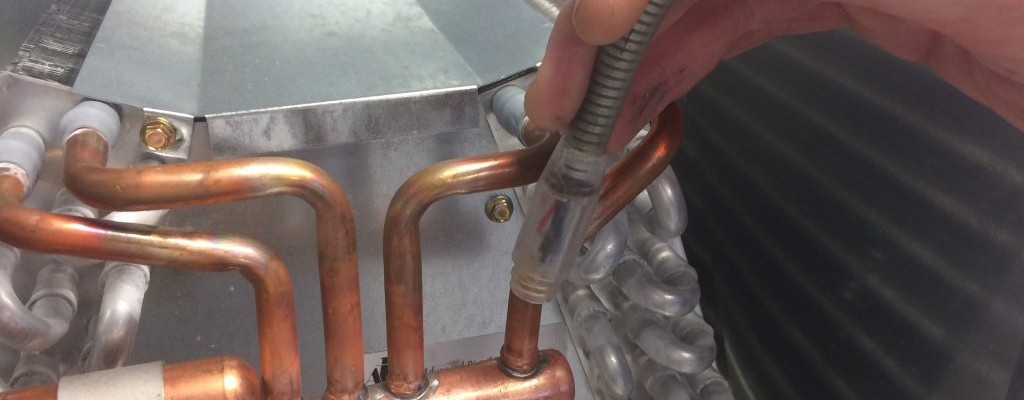HVAC equipment manufacturers are starting to switch from copper coils to aluminum for air conditioning condenser and evaporator coils for various reasons. When purchasing a new system with either copper or aluminum-coil systems, it’s good to have some knowledge of the pros and cons of each type.
Traditionally, copper is considered the best choice of material for evaporator and condenser coils. The reasons behind this are its heat transfer rate, cost-effectiveness, flexibility, and the fact that copper linesets were designed to join split systems. However, the cost of copper has skyrocketed in recent years, prompting manufacturers to find an alternative. Aluminum has gained popularity because it’s less expensive and features many of the same benefits mentioned above for copper.
Copper vs. aluminum
| Copper tube & fins | Aluminum tube & fins | Hybrid (Copper tube & alum. fins) | |
| Cost | High | Low | Mid |
| Efficiency | High | Mid | Mid |
| Corrosion resistance | Low | High | Low |
| Durability | High | ??? | Low |
| Repair difficulty | Easy | Very Hard | Location-dependent |
Heat transfer
The main advantage of copper is that it has about twice the conductivity that aluminum has for heat transfer. Put simply, copper is more efficient at cooling air than aluminum is. That’s not to say aluminum isn’t efficient – it’s just that copper is more so.
Difficulty of repair
It’s easy to repair a copper coil if damaged in the field. Aluminum, on the other hand, once damaged, requires the entire coil to be replaced. Today’s copper tube and aluminum fin coils aren’t very repairable either. The copper is so thin that it’s challenging to braze.
Corrosion resistance
Aluminum has oxidation protection that copper doesn’t have. The problem with aluminum coils is if a leak does occur, repairs are virtually impossible. Also, with aluminum’s relatively recent introduction in the HVAC realm, the jury is still out on its longevity – we’ll have to wait and see how aluminum holds up in 15 or 20 years.
Copper’s alarming trend (skimp)
Modern technology and the rising cost of copper have prompted manufacturers to skimp on the amount of material used in their coils. The importance here is that thinner (and thus, less efficient) coils have flooded the market. The perception remains that copper lasts longer than aluminum. However, this is likely to change due to manufacturers “skimping” on quality by using thinner, cheaply-made, less durable copper coils.
Theft target
Quality concerns aside, the ever-increasing price of copper makes it more appealing to thieves. As a result, it’s being targeted more and more often. So, if you opt for a copper coil, it’s wise to ensure that the unit is well-secured to discourage theft.
Hybrid coil issues
While copper is used for the line sets, aluminum is used for the fins. Unfortunately, when copper and aluminum are joined, galvanic corrosion occurs. Fortunately, thanks to advancements in modern technology and the corrosive effects of joining unrelated metals have been reduced, making aluminum an appealing choice for some homeowners.
So, copper or aluminum?
Each metal has advantages that make it suitable for evaporators and condensers. The drawbacks are also split fairly evenly, so the choice really falls to the consumer. Looking at the pros and cons of copper and aluminum, both coils are used according to the availability of space, their cost-benefit, as well as ease of maintenance. Some equipment will work well with aluminum and some will best work with copper. We encourage you to do your research in this area, and if you have questions or concerns, feel free to call our expert team – we’re always happy to help!


Comments are closed